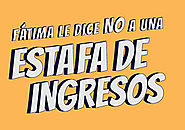-
About
- About Listly
- Community & Support
- Howto
- Chrome Extension
- Bookmarklet
- WordPress Plugin
- Listly Premium
- Privacy
- Terms
- DMCA Copyright
- © 2010-2025 Boomy Labs

 Polly Farrington
Polly Farrington
Listly by Polly Farrington

By Media Genesis | Navigating the web can often be frustrating for even the most capable and savvy of users. So envision yourself trying to do so with a sight, hearing, or any other kind of impairment. Hard to imagine, right?
Standards play a key role in defining accessibility requirements for each of these components. Some accessibility requirements are easy to meet, yet understanding the basics of how people with disabilities use the Web helps implement them more effectively and efficiently. Some aspects of accessibility require more technical skills or advanced knowledge of how people use the Web.
According to a national survey conducted in September 2010, 27% of American adults live with a disability that interferes with activities of daily living, including: 15% of American adults who say they have serious difficulty walking or climbing stairs.
According to a national survey conducted in September 2010, 27% of American adults live with a disability that interferes with activities of daily living, including: 15% of American adults who say they have serious difficulty walking or climbing stairs.

Accessibility expert and WebAIM associate director Jared Smith has warned us all to stop using carousels. His warning comes in the form of microsite Should I Use A Carousel?, which - in carousel format - provides reasoning for not using this kind of interface component.

You may have read the title of this article and asked, "Why is EyeQuant writing about color blindness when there are far more pressing matters - like the possessive pronoun in my call to action - at hand?". In this article, we'll speak about color blindness and why it matters to your website optimization strategy - and your users.

By Janet M. Six Send your questions to Ask UXmatters and get answers from some of the top professionals in UX. In this edition of Ask UXmatters, our experts discuss how responsive Web design and accessibility fit together. Every month in Ask UXmatters, our panel of UX experts answers our readers' questions about a variety of user experience matters.

This can include people who are blind, color blind, or have low vision, those who are Deaf or have hearing difficulties, people with mobility impairments which may be temporary or permanent, or people with cognitive disabilities. Design for people who are young, old, power users, casual users, and those who just enjoy a quality experience.
Webucator now offers Web Accessibility training based on this tutorial. The web accessibility book, Web Accessibility: Web Standards and Regulatory Compliance, is provided with the course when delivered for private groups. The Web Accessibility Tutorial itself is also available on the Webucator site.

Free Web Accessibility and Section 508 tutorial from Webucator. Webucator is a leading provider in Web Accessibility and Section 508 training.

Section 508 of the Rehabilitation Act established regulations for federal entities to accommodate people with disabilities. It covers physical access - such as wheelchair ramps and elevators - and digital access to information and resources. A major part of digital accessibility is providing captioning for online video content.

Title: Subject: Publisher: Description: Contributors: Effective_date: None Expiration_date: None Type: Document Format: text/plain Language: Rights: SafetyBelt: None ? Below is the entire module on one page. It is estimated that 43,000,000 Americans have disabilities, with the number growing significantly as the population ages.
As entities throughout the University System make increasing amounts of information available through the Internet, the exact state of the law with respect to accessibility of Internet based resources should be reviewed. One relatively recent development, which has caused some confusion in the Higher Ed community, is Section 508 of the Rehabilitation Act.

Title III of the Americans with Disabilities Act (ADA) requires that businesses and nonprofit services providers make accessibility accommodations to enable the disabled public to access the same services as clients who are not disabled. This includes electronic media and web sites.

Disability. It's the thing no one thinks about on the Internet, the issue covered least on most major news sites. It's not just that disability is ignored or only discussed in passing or that rare coverage of disability is often filled with outdated and offensive language, themes, and attitudes; the Web itself is often entirely inaccessible to disabled people.

by Published in Margit Link-Rodrigue Accessibility Designers have always had a vital interest in affordance, a term Donald Norman made famous in The Design of Everyday Things and later brought to the user interface design community in Alan Cooper's About Face. Affordance allows us to look at something and intuitively understand how to interact with it.

Government agencies are increasingly using social media to engage with citizens, share information and deliver services more quickly and effectively than ever before. But as social content, data and platforms become more diverse, agencies have a responsibility to ensure these digital services are accessible to all citizens, including people with disabilities.

The Trace Center's Photosensitive Epilepsy Analysis Tool (PEAT) is a free, downloadable resource for developers to identify seizure risks in their web content and software. The evaluation used by PEAT is based on an analysis engine developed specifically for web and computer applications.

As a respected third party accessibility expert, WebAIM can evaluate and certify your site to established web accessibility guidelines.
Authoring Tool Accessibility Guidelines (ATAG) 2.0 was published today as a Proposed Recommendation. ATAG 2.0 provides guidelines for designing web content authoring tools that are both more accessible to authors with disabilities (Part A) and designed to enable, support, and promote the production of more accessible web content by all authors (Part B).

Title III of the Americans with Disabilities Act (ADA) requires that businesses and nonprofit services providers make accessibility accommodations to enable the disabled public to access the same services as clients who are not disabled. This includes electronic media and web sites.

Title: Subject: Publisher: Description: Contributors: Effective_date: None Expiration_date: None Type: Document Format: text/plain Language: Rights: SafetyBelt: None ? Below is the entire module on one page. It is estimated that 43,000,000 Americans have disabilities, with the number growing significantly as the population ages.
Javascript Required. WAVE 5.0 requires a modern web browser with Javascript enabled. If you are using noscript or other javascript blocking software, please add wave.webaim.org to your script whitelist.

Is the content you've written accessible? Does it meet the standards set out in the Web Content Accessibility Guidelines 2.0? Do you know how to check if your content is accessible? For these exercises, you'll need a web browser and an accessibility checking tool.

A series on accessibility topics for web writers. Covers the accessibility guidelines for text, images and PDF documents; using free tools to evaluate the
